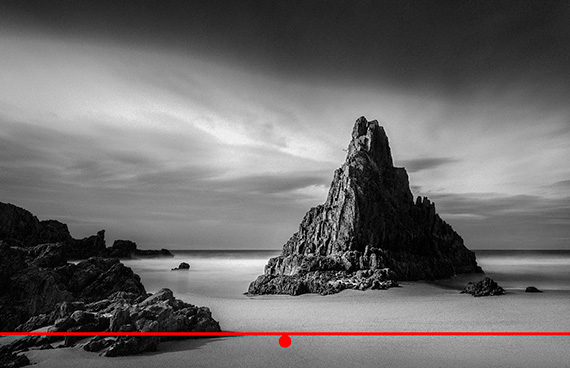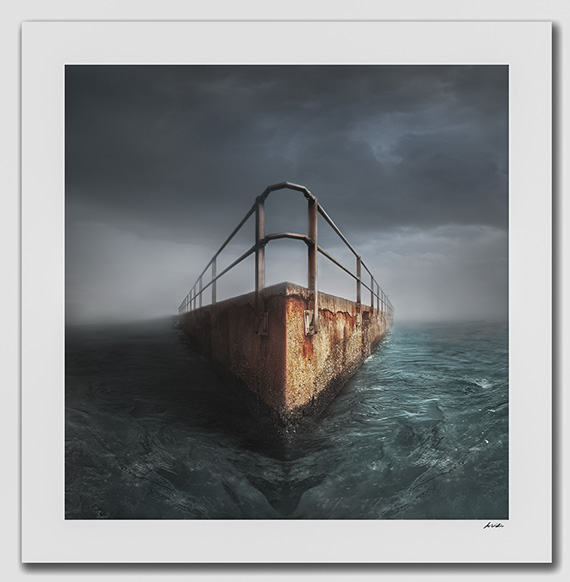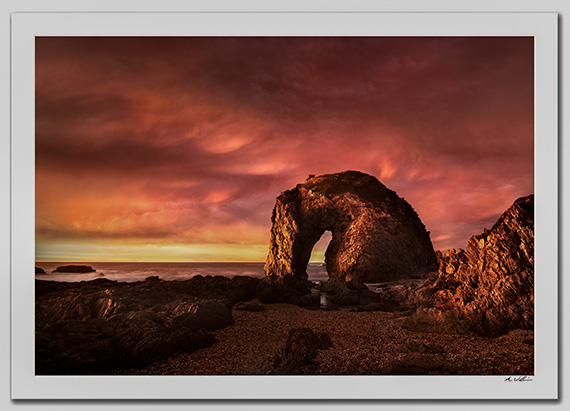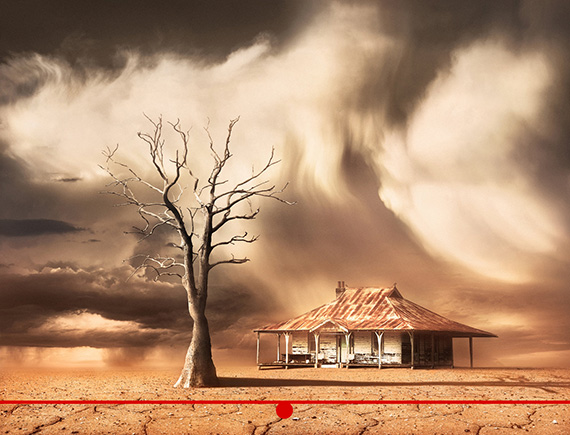What is the first rule of composition that we all learn at the very beginning of our journey? The Rule of Thirds—right.
What if there was another simple rule, that was as good or better than the rule of thirds?
I used to follow thirds blindly, placing all my subjects and horizons on or near the one-third lines. Don’t get me wrong—it can be very useful in creating strong compositions. The problem arises when we follow any rule blindly without giving any thought to other compositions.
Balance is better than the rule of thirds
What is a balanced composition? It’s actually quite easy.
The photo below is an excellent example of a balanced composition. It also happens to suit the rule of thirds, too.

How does it work?
Let’s assume the red line is a see-saw (or teeter-totter) and the red circle in the centre is the pivot point.
To achieve a balanced composition, our aim is to frame the objects within our photo so the see-saw is perfectly balanced. An equal amount of weight on each side.
You can see our rather large triangular subject sits mostly to the right of the centre point. Without the rocks on the left side, the photo would be in danger of being right-side heavy; however, with the inclusion of the rocks, the image is very well balanced.
Have you ever ridden a see-saw with someone much lighter? You probably noticed that, to achieve balance, the larger person needs to slide right up toward the middle. This rule also applies to compositional balance. A large object close to the pivot (middle) can be balanced by a smaller object near the edge of the frame.
Don’t be afraid to put your subject in the centre

A lot of my portfolio photos feature a big, bold subject in a central composition. I get asked a lot why this is the case, and why I don’t use the rule of thirds more often.
The answer is, more often than not, big and bold subjects look odd (due to being off balance) anywhere but over the centre point. You will notice in the above example the horizon is more or less on the one-third line; however, the subject is balanced centrally between the left and right edge.

Above is a very simple and uncluttered, balanced composition. If we modify the image a little to have the subject sit on the rule of thirds (see below), we get an unbalanced and awkward composition that doesn’t work as well.

It’s not all about the rule of thirds
I am getting a little off track here, as I wanted to highlight the power of compositional balance. However, given the rule of thirds has such a huge following among landscape photographers, I feel I should touch on that too.
Firstly, I would definitely say that from a landscape point of view, although they both work depending on the scene, in my opinion balance is much more important than the rule of thirds. Who would have thought? The rule of thirds is touted as the holy grail of composition—but that is just not the case.
When does the rule of thirds work?
My best guess is the current love affair with the rule of thirds came from portrait painting and portrait photography, because it works so well in those fields—and, let’s be honest, that is where photography began.
Often you will see a portrait with the subject positioned to the left or right, and often they will be looking into the large vacant area on the other side of the photo. It works very well; however, most subjects we photograph in landscapes don’t tend to be looking one way or another, so blindly following the rule of thirds often results in an unbalanced photo.
However, there are times when the rule of thirds works very well within landscape photography:
- Often the horizon looks best placed roughly on the rule of thirds. Having two-thirds foreground and one-third sky can often give the photo a great sense of depth, and two-thirds sky and one-third foreground can result in a feeling of space.
- The rule of thirds can also work very well if our subject feels like it’s pointing in the direction of the open area. Often if one side of the subject is in light and the other is in shadow, then having the light side pointed into the open space can also result in a strong thirds composition. (See the example below.) The photo is unbalanced; however, the image is successful in a one-thirds composition as the subject looks to be facing the open space.

Consider all your options
There is no right or wrong way to compose a photograph. Next time you line up a shot, consider both balance and the rule of thirds. Two options are always better than one!

Take a look back through your photos and see how many are balanced. Have a play with the crop and see if you can achieve more balanced photos.
Remember, the rule of thirds is still a great compositional tool—however, you now have another option in your toolkit!
- - - - - - - - - - - - - - - - - - - - - - - - - - - - - - - - - - - - - - - - - - - - - - - - - - - - - - - - - - - - - - - - - - - - - - - - - -
The post Compositional Balance vs the Rule of Thirds appeared first on PictureCorrect.
from PictureCorrect https://ift.tt/hCjqzKe
via IFTTT






0 kommenttia:
Lähetä kommentti